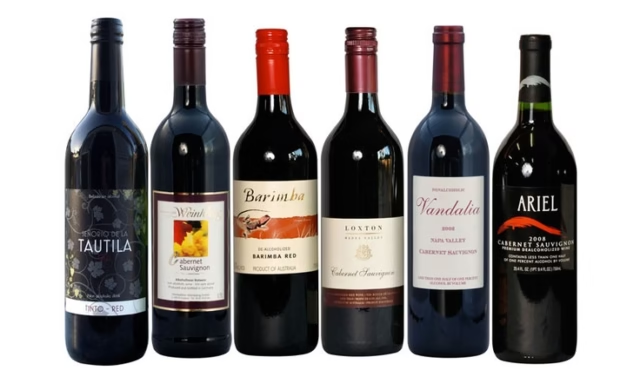Wine has been cherished for centuries as a symbol of celebration, culture, and relaxation. Yet, in recent years, a growing number of people are seeking alternatives that allow them to enjoy the rich flavors and traditions of wine without the presence of alcohol. This is where non-alcoholic wines come in. These beverages are carefully crafted to retain the essence, aroma, and taste of traditional wine while offering a healthier and more inclusive option for individuals who want to avoid or reduce their alcohol consumption.
The rise of non-alcoholic wines is not just a passing trend; it represents a broader cultural shift towards wellness, mindfulness, and inclusivity in social settings. Whether you are the designated driver, managing your health, or simply making a lifestyle choice, non-alcoholic wines provide an elegant solution that doesn’t compromise on experience.
What are Non-Alcoholic Wines?
Non-alcoholic wines are beverages made from traditional wine grapes that undergo the same fermentation process as regular wine. However, after fermentation, the alcohol is removed through specialized techniques. This ensures that the beverage retains the depth of flavor and aromatic qualities of wine while containing either no alcohol or less than 0.5% alcohol by volume, depending on regulations.
Unlike grape juice, which skips fermentation altogether, non-alcoholic wines preserve the complexity and character of wine because the fermentation process develops tannins, acids, and aromas that contribute to its distinctive profile. In short, it is wine first, with the alcohol removed afterward, which is what sets it apart from other grape-based beverages.
How Non-Alcoholic Wines Are Made
The production of non-alcoholic wines requires innovation and precision. Several methods are commonly used to remove alcohol while keeping the wine’s structure intact:
Vacuum Distillation
This method removes alcohol at lower temperatures by creating a vacuum environment. The lower boiling point allows alcohol to evaporate without significantly damaging the delicate aromas and flavors of the wine.
Reverse Osmosis
A more advanced technique, reverse osmosis filters the wine at a molecular level. The alcohol is separated from water and flavor compounds, then the water and flavors are recombined to create a finished non-alcoholic product.
Spinning Cone Column
One of the most widely used methods, the spinning cone column gently extracts volatile compounds like aromas, removes alcohol, and then reintroduces the flavors to the de-alcoholized wine. This approach preserves the authentic wine experience with minimal loss of complexity.
These techniques ensure that the resulting beverage is far more sophisticated than simply drinking grape juice, offering layers of taste that appeal to wine enthusiasts.
The Growing Popularity of Non-Alcoholic Wines
The demand for non-alcoholic wines has surged in recent years due to changing consumer preferences and health-conscious lifestyles. A growing number of people are rethinking their relationship with alcohol, driven by factors such as:
- Health and Wellness Trends – Many individuals are reducing alcohol intake to improve overall health, manage weight, and promote better sleep.
- Inclusivity in Social Settings – Non-alcoholic wines allow everyone to participate in toasts, dinners, and celebrations without feeling excluded.
- The Rise of Mindful Drinking – Younger generations, in particular, are embracing moderation and balance in lifestyle choices, including beverages.
- Pregnancy and Medical Restrictions – Non-alcoholic wines provide safe alternatives for those who cannot consume alcohol for medical or personal reasons.
With this shift, restaurants, hotels, and event organizers are increasingly offering non-alcoholic wine options on their menus to cater to diverse audiences.
Types of Non-Alcoholic Wines
Just like traditional wines, non-alcoholic versions come in a variety of styles. This diversity ensures that wine lovers can find a suitable option for any occasion.
Non-Alcoholic Red Wines
These wines retain the deep, bold flavors of traditional reds such as Cabernet Sauvignon, Merlot, or Shiraz. They often feature notes of berries, cherries, and spices, with a tannin structure that mimics regular red wine.
Non-Alcoholic White Wines
Refreshing and crisp, non-alcoholic white wines often showcase citrus, apple, or pear notes. Popular varieties include Chardonnay, Sauvignon Blanc, and Riesling.
Non-Alcoholic Rosé Wines
Rosé remains a favorite for its light, fruity character and versatility. Non-alcoholic rosé wines capture the same delicate pink hue and refreshing flavors, perfect for warm weather or casual gatherings.
Non-Alcoholic Sparkling Wines
Bubbly and celebratory, sparkling non-alcoholic wines are often used for toasts, weddings, and special events. These drinks replicate the effervescence and lively character of Champagne or Prosecco, offering sophistication without the alcohol.
Health Benefits of Non-Alcoholic Wines
Choosing non-alcoholic wines over traditional varieties can provide several health-related advantages:
- Lower Calories – Since alcohol contains calories, removing it reduces the calorie count, making these wines more weight-friendly.
- Reduced Health Risks – Lower alcohol intake helps decrease the risk of liver disease, heart conditions, and certain cancers.
- Better Sleep – Alcohol often disrupts sleep cycles, whereas non-alcoholic wines allow relaxation without compromising rest.
- Safe for More People – They can be enjoyed by pregnant women, those on certain medications, or anyone avoiding alcohol for religious or personal reasons.
Some non-alcoholic wines even retain antioxidants like polyphenols and resveratrol, which are linked to heart health and other benefits.
Pairing Non-Alcoholic Wines with Food
Non-alcoholic wines, much like their traditional counterparts, can be paired beautifully with different cuisines to elevate meals. For example:
- Non-Alcoholic Reds pair well with grilled meats, pasta, or hearty stews.
- Non-Alcoholic Whites complement seafood, chicken, and light salads.
- Non-Alcoholic Rosé matches perfectly with Mediterranean dishes, tapas, or summer snacks.
- Non-Alcoholic Sparkling Wines shine when served with appetizers, cheese boards, or desserts.
Pairing ensures that the wine enhances the meal experience while creating a sense of occasion, even without alcohol.
Challenges in Non-Alcoholic Wine Production
While the industry has made remarkable progress, crafting a non-alcoholic wine that rivals traditional versions is not without its challenges. Removing alcohol can sometimes result in a loss of body, mouthfeel, or depth of flavor. To address this, winemakers experiment with blending, natural additives, and innovative techniques to restore balance and complexity.
Another challenge lies in consumer perception. For many years, non-alcoholic wines were dismissed as bland or overly sweet. However, advancements in production have dramatically improved quality, leading to a new generation of beverages that rival their alcoholic counterparts.
The Future of Non-Alcoholic Wines
The non-alcoholic wine industry is expected to continue its upward trajectory as consumer demand grows globally. Innovations in production technology, better grape selection, and a focus on authenticity will further enhance the drinking experience. Additionally, as awareness of health and wellness expands, non-alcoholic wines will likely become a permanent fixture in supermarkets, restaurants, and homes worldwide.
With celebrity endorsements, specialized vineyards, and dedicated brands entering the market, non-alcoholic wines are gaining prestige and recognition. This evolution reflects a broader societal shift towards mindful consumption and healthier alternatives without sacrificing enjoyment.
Conclusion
Non-alcoholic wines represent more than just a beverage—they symbolize inclusivity, wellness, and balance. They allow wine lovers to savor the aromas, flavors, and rituals of wine drinking while avoiding the negative effects of alcohol. With growing consumer interest, improved production methods, and expanding availability, non-alcoholic wines are transforming the way we celebrate, dine, and enjoy life.







